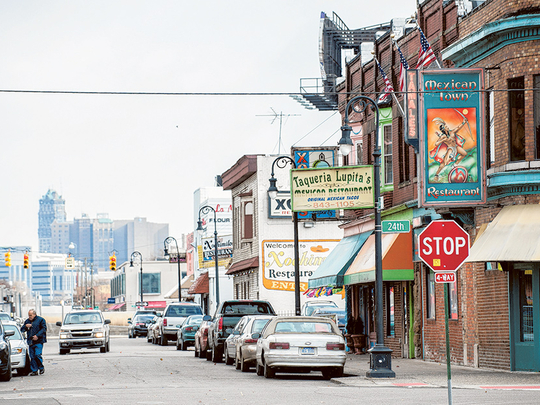
Washington: US small business optimism jumped in December to its highest level in more than eight years, the latest sign of strength in the economy even as dark clouds settle over global growth. The outlook was further bolstered by other data showing job openings approached a 14-year high in November.
“There are concerns about global growth, but the fundamentals for the US economy are very solid and what’s going on overseas should only be a minor drag,” said Gus Faucher, a senior economist at PNC Financial Services in Pittsburgh.
The National Federation of Independent Business said its Small Business Optimism Index increased 2.3 points to 100.4 last month, the highest reading since October 2006. The index, which is back at its pre-recession average, was bolstered by a surge in sales expectations as well as hiring, capital outlays and business expansion plans.
The small business sector accounts for about half of the country’s overall gross domestic product and makes up the largest share of hiring. In a separate report, the Labor Department said job openings, a measure of labour demand, increased 2.9 per cent to a seasonally adjusted 4.97 million in November, the highest level since January 2001.
“It doesn’t get any better than this for the economy. This is another sign that the labour market is tightening up and we are already starting to see more help wanted signs out there in store windows,” said Chris Rupkey, chief financial economist at MUFG Union Bank in New York.
The Job Openings and Labor Turnover Survey (JOLTS) report is one of the indicators being closely watched by Federal Reserve Chair Janet Yellen and other policymakers at the US central bank as they contemplate the future course of monetary policy. It confirmed the recent strong trend in job growth and suggested an acceleration in 2015.
While hiring remained below pre-recession levels, there is little doubt the jobs market is tightening. The JOLTS report showed there were 1.82 people for every open job in November. That was the smallest ratio since January 2008 and compared to 1.86 in October.
“We view this ratio’s continued decline as indicative of a reduction in labour market slack,” said Jesse Hurwitz, an economist at Barclays in New York. With more slack being absorbed, wage growth should pick up. There are signs an acceleration is under way.
The NFIB survey showed more businesses are raising wages, with a quarter of respondents in December reporting higher compensation — the largest share since January 2008. Coupled with the growing signs of a tightening jobs market, it suggests a surprise drop in average hourly earnings in December’s employment report was a fluke.
“That leaves the slump in average hourly earnings in December looking even odder,” said Paul Ashworth, chief US economist at Capital Economics in Toronto. The NFIB compensation measure correlates closely with the government’s quarterly employment cost index, which is widely regarded as a better gauge of wage growth. About 17 per cent of businesses in the NFIB survey plan to raise compensation in the coming months.












